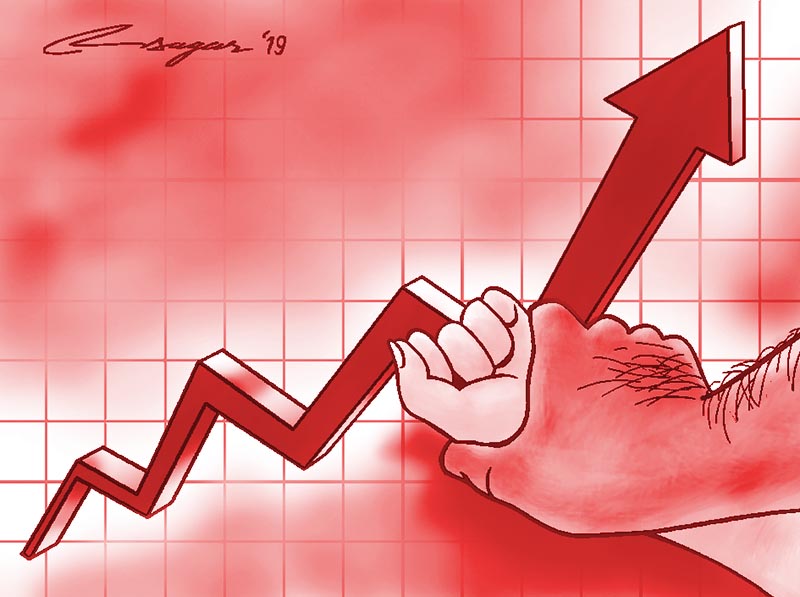Preventing sexual crimes: Policy level changes needed
Violence nowadays is categorised as a contagious social disease as one violent act often leads to another, and people copy each other’s behaviour until violence becomes normal
Recent cases involving violence against women, especially rape, covered by the different media have stunned the entire nation. Almost every day, we have become habituated to gulping news of depression along with the morning tea – nine-year-old raped by grandfather in Gorkha, 74-year-old woman raped in Doti district and the unsolved case of Nirmala Panta.
Such incidents indicate that any female is vulnerable to sexual attack. Each case of sexual assault is more disturbing than the other. Only some of them get media coverage, but many unreported cases vanish with time. Coupled with this, the ‘rule of law’ often acts as the private militia of those in power or with money and influence. Given the foot-dragging by the authorities in Nirmala Panta’s case, people have started cultivating a feeling that they are unimportant for the system to care.
So what can theorise this series of sexual violence against Nepali females stirring almost on a daily basis? In 1982, two social scientists, George L. Kelling and James Q. Wilson, proposed the ‘broken windows theory’ to clarify the way social disorders spread and how they continue to boom like normal in society. The broken window insight is a crime analysis model, which views that visible signs of anti-social behaviours and civil disorder will create an environment that encourage further criminality and disorder, ultimately leading to big crimes.
Take a building with one broken window. If that window is not repaired, the vandals will breed the tendency to break a few more windows, and people walking by will assume that no one cares. If Nirmala Panta’s case is still a riddle despite such huge public outcry, then the feeling of ‘nobody cares’ will encourage perpetrators to commit more crimes and discourage the public from reporting sex crimes.
This model further advocates strong policing methods to target trivial crimes, such as vandalism, female teasing, minor sexual harassment and other overlooked misconduct to help create an atmosphere of order, thereby preventing more serious crimes like rape. In short, verbal teasing, unwanted touching and cyber sexual harassment are the foetus stage of rape.
Similarly violence nowadays is categorised as a contagious social disease as one violent act often leads to another, and people copy each other’s behaviour until violence becomes normal. There is a reason why most cases of mass shootings take place in the USA and violent sexual crimes are repeating in Nepal.
Many researchers have found that violent behaviours are transmitted and copied, so they grow like a virus unless you control it at an early phase. Imitation of sexually abusive behaviours gets triggered even from virtual realities like pornography.
However, this theory alone is not sufficient to comprehend the psychology behind rape. For broader understanding, one must accept the underlying assumption that the recent episodes of ‘rapes in Nepal are not a sex crime, rather they are a gender crime’. Past experience can shape the brain accordingly. Children exposed to family violence are more likely to show violent behaviour during adolescence. In the same way, a male nurtured under patriarchal values sees a female as being inferior and a submissive being, internally developing a kind of complex to exploit the female.
When we think of rape and ways to control it, the first thing to strike our mind is strong punishment. But lately, some advance societies have begun to view sexual violence as a public health issue of the modern world.
Human beings deliberately practice various risky behaviours like overeating, smoking, unsafe sex and others that can lead to serious health conditions. In medical practice, doctors usually encourage patients to change such unhealthy behaviours through dieting, using contraceptives and quitting smoking rather than wait to cure obesity, cancer or AIDs. But when it comes to sexual violence, it is considered to be an innate behaviour, which can only be answered with tougher punishment.
However, apart from the old methods, this innovative public health intervention model endeavours to prevent possible sexual crimes by identifying and minimising the “risk factors” that may contribute to sexual assault. Minimising the risk factors could mean addressing the weak rule of law, parenting deficits, uncivil gender perspectives, negative peer influences, community living conditions and abusive porn contents on digital platforms.
As an immediate intervention, some policy level changes are required. For instance, rape and other cases of sexual assault need to be fast-tracked in the distinctive courts especially set up to deal with violence against women. There should be tougher penalty for such crimes. And for achieving the sustainable goals, the government should experiment with the public health intervention model to deal with such cases.
Likewise the law enforcement authorities must be practical while dealing with rape cases by involving more policewomen and authorised members from the women activist groups to avoid possible legal foul plays. And as in the medical approach, prevention should be given more priority than cure to uproot this social tumour.
Poudyal is a senior researcher at Global Initiative For Vivid Empowerment, a Kathmandu-based NGO






